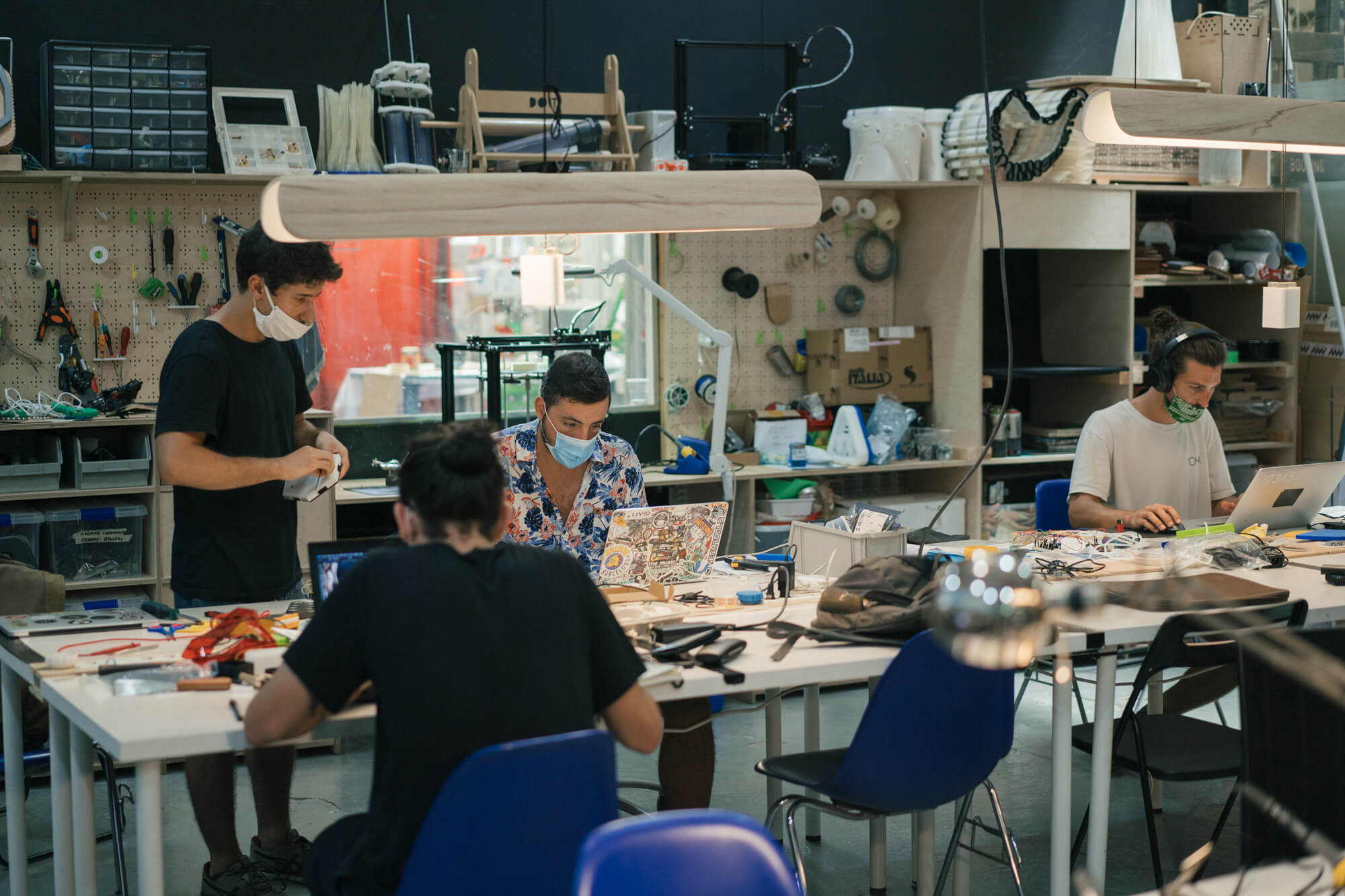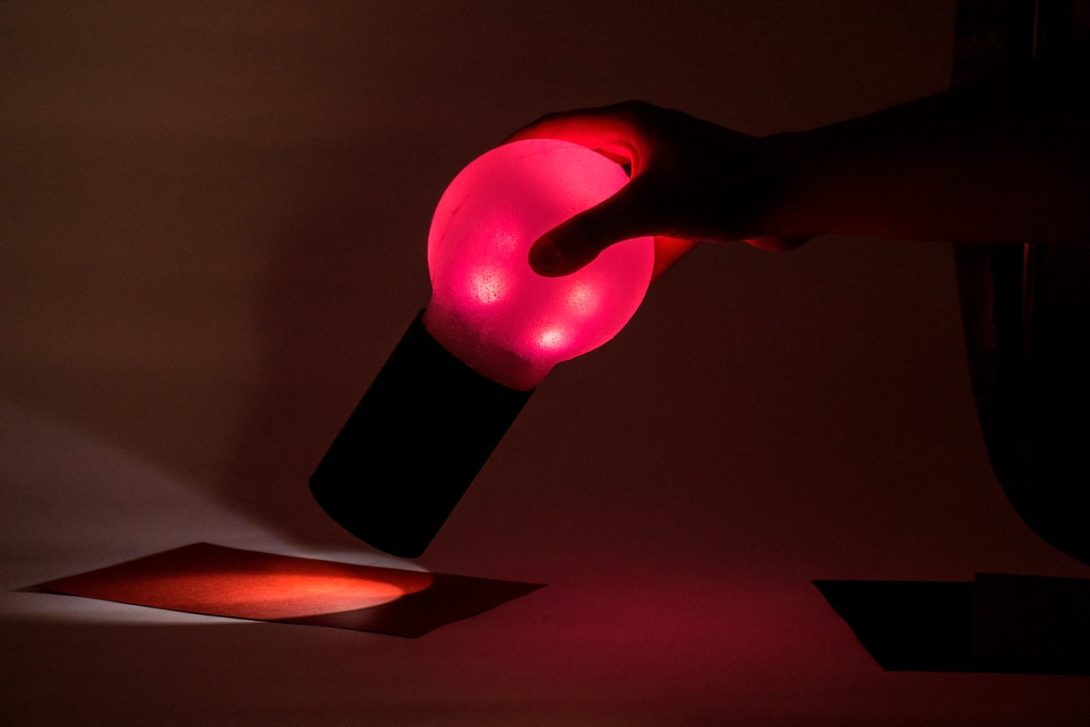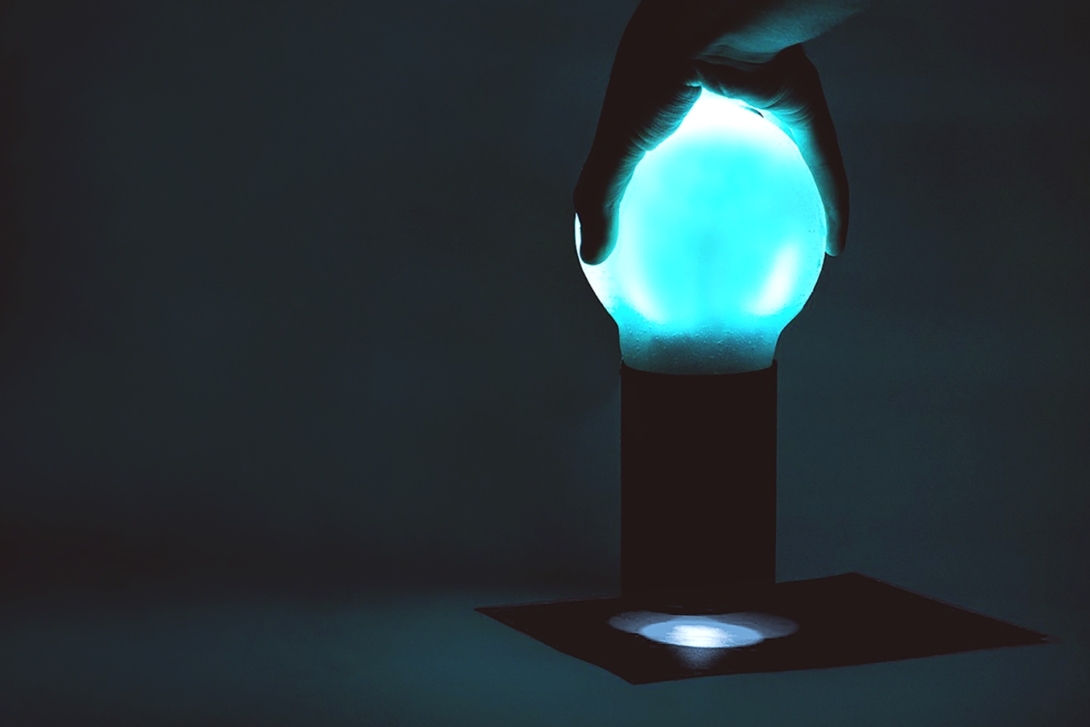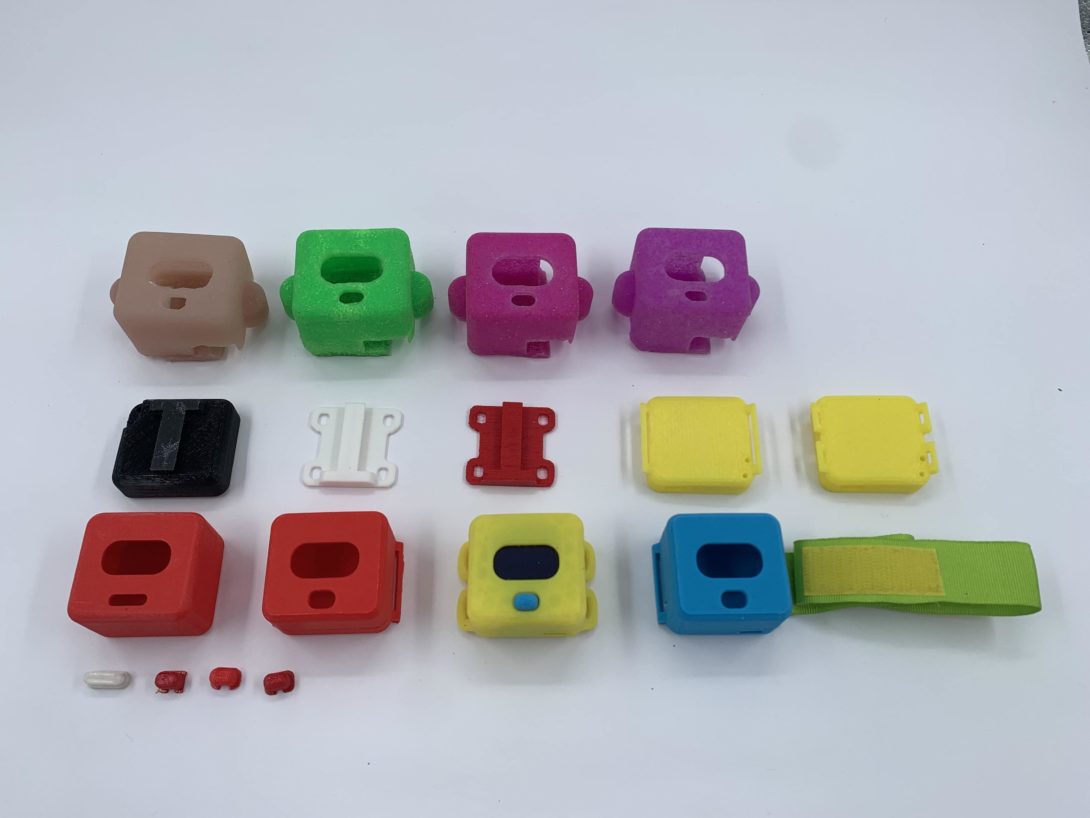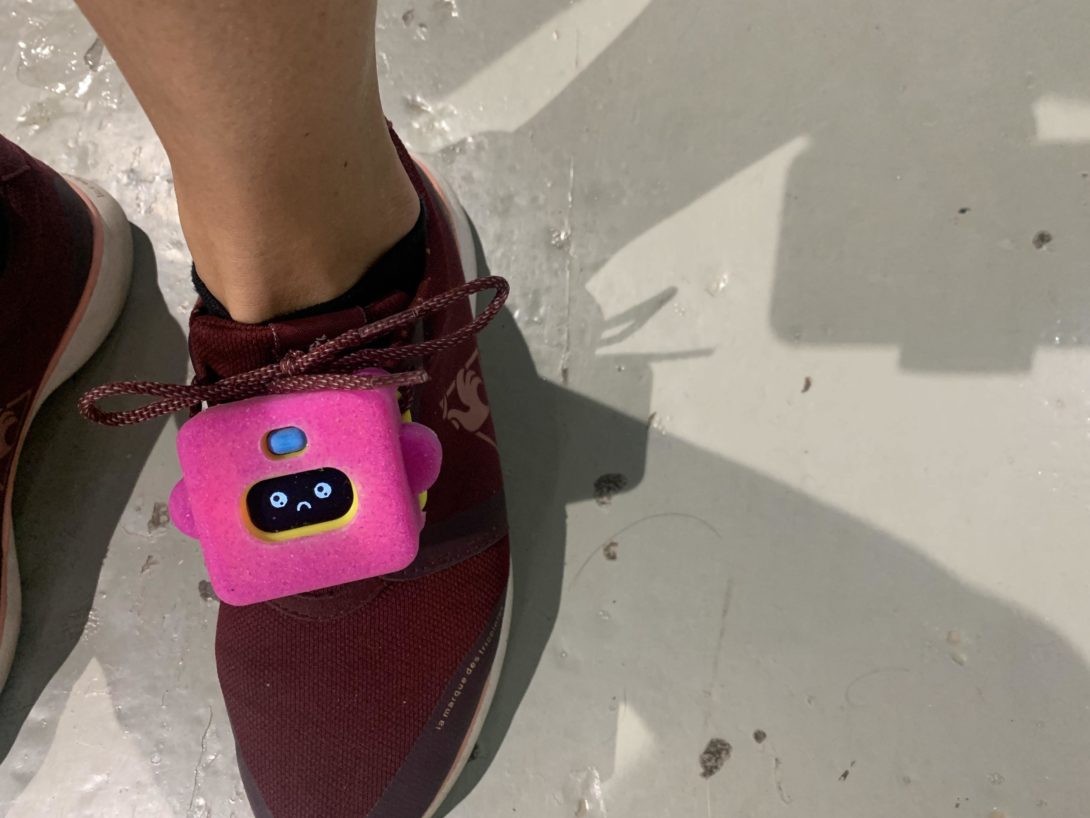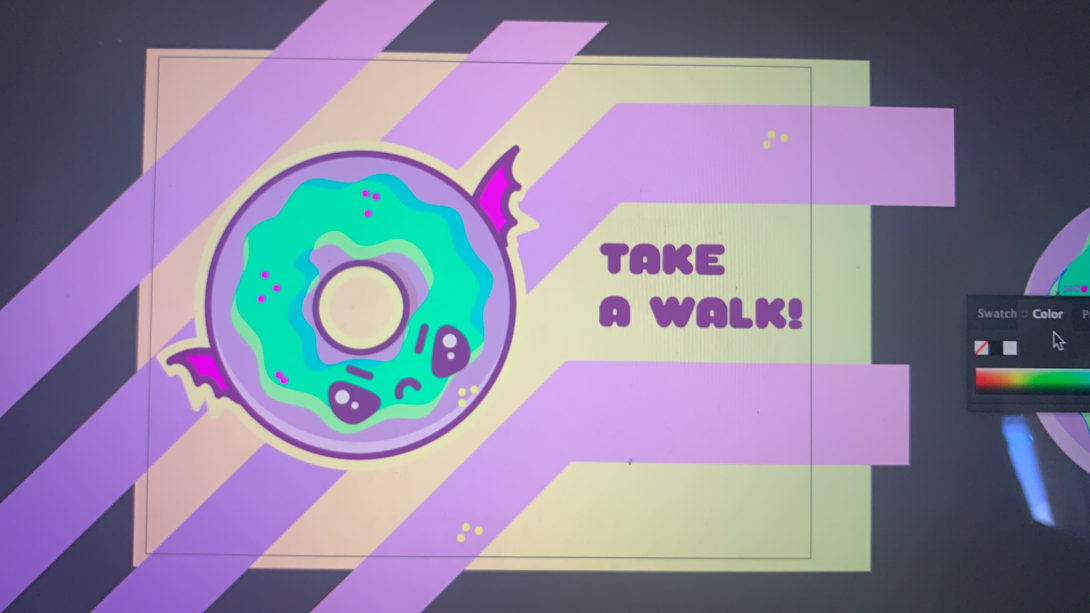Blog
Fab Academy is a five-month multi-disciplinary and hands-on learning experience that empowers to learn-by-doing and inspires to make stuff locally to become an active participant in sustainable cities and communities.
For the 2021 edition of Fab Academy Barcelona, Distributed Design and Fab Lab Barcelona offered two scholarships for designers. The scholarship covered 75% of the total tuition costs of the program for two designers as well as the opportunity to participate in yearly activities of the Distributed Design Platform.
We have interviewed the two winners of the scholarship and they reflected on their experience in the program.
Interview with Nil Peguero Martínez
In a few words, how would you describe yourself?
I am Nil Peguero Martínez, I am 26 years old and I am from Barcelona, Spain. I have an industrial profile and I am always looking for ways to learn about technology and new trends.
What’s your background?
I am an Industrial Designer and Mechanical Engineer. I work as a freelancer and I teach at the Polytechnic University of Catalonia. My projects are mainly focused on industrial solutions and design of objects such as lighting and domestic furniture.
Why did you choose Fab Academy at Fab Lab Barcelona?
I was looking for a way to specialize in digital manufacturing and through LinkedIn I found the Distributed Design scholarships for Fab Academy 2021. I researched Fab Lab Barcelona and was amazed by the facilities and machinery they offer. I was finally awarded the scholarship and I attended FabAcademy in spring of 2021.
What did you learn at Fab Academy?
The biggest lesson from Fab Academy for me was the ability to develop entire projects with just one computer. I have found digital fabrication for engineering and design profiles to be a super powerful tool.
The biggest discovery has been the design and manufacture of electronics. It was something that I did not know and that now forms part of all my projects.
How is a day at IAAC and Fab Lab Barcelona?
The days at Fab Lab are stressful but motivating at the same time. Delivery times are short and there is a lot to learn.
In summary, you arrive in the morning early and straight to work. You spend the day dealing with the project and chasing down the instructors to help you (always happy to help). A little lunch break on the rooftop and work hard in the afternoon.
If it wasn’t for the coffee breaks on the patio, I don’t know if I would have made it.
What did you enjoy the most about the program?
What I enjoyed the most is clearly the use of the machines. Being able to develop something on the computer, launch it on the machine you need and have it in your hand in a few minutes is an incredible feeling. They have machines for almost everything and there is always someone to teach you how to use it. From there you have total freedom to use them as you please.
What was your final project, and how did you make it? (tools, processes, etc)
My final project was a colored copier lamp. It was based on the reading of colors by means of an RGB sensor and a dome of LEDs that emitted the color.
The idea was to extract the light that is the essence of colors to a device. Just like using a dropper. Even the interaction with the lamp was based on the dropper. You squeeze the bulb and the lamp “absorbs” the color. When you let go of the pressure, it glows in the color it has read.
The structure was made in black PLA 3d printing and the upper bulb with a translucent silicone mold.
I developed all the electronics and manufactured it, by CNC and copper plates. Once everything was working correctly, I did the programming of the processor and the power supply using Li-ion batteries.
The result left me super happy and surprised that I could have developed that in just a few months.
What would you say to someone who’s thinking about taking the Fab Academy?
To someone who wants to take Fab Academy, I would say that I prepared for a high work rate and to spend more hours than you can expect. But on the other hand, I would tell you that you will learn in 6 months more than in many years of university.
The pace is fast to work but also to assimilate concepts, so the learning is very good.
The companions will be there to help each other and the instructors never have a problem helping you whatever it takes.
What are your plans now that you’ve finished the academy?
Now I am opening my own design studio with my partner. We focus our efforts on creating a traditional design studio (furniture, lamps, …).
The Fab Academy specialization allows me to prototype all my projects before taking them to industrial production. It’s a great way to prepare projects and make mistakes during prototyping, prior to industry.
I continue to teach at the university and we are opening a digital manufacturing laboratory in which I am collaborating.
Interview with Denise Rey
In a few words, how would you describe yourself?
I’m a Product Designer passionate about experimentation. I am fascinated with the way we interact with objects in this ever-increasing technological world. Beyond case, I enjoy tinkering with things like Arduino, LyliPads, and conductive knitting. I love drawing animals, food tourism, cooking & eating.
What’s your background?
I have a double degree in Industrial Design and Textile Design. During my time at the university, I joined a research group and worked as a Morphology assistant professor at Universidad de Buenos Aires. Later, being awarded a scholarship for young researchers. That was the beginning of my exploration of the digital world and interfaces. From that, one thing led to another, and I ended up dedicating a large part of my professional career to designing digital interfaces.
Why did you choose Fab Academy at Fab Lab Barcelona?
Basically, I chose the Fab Lab BCN because I knew it was an awesome place, and it was recommended to me by some friends who did masters at IaaC.
I had been interested in taking a course in creative technologies for a long time but could not find anything that suited my hybrid profile. I think Fab Academy was an ideal experience in that regard. While it is a fast-paced course focused on weekly assignments, you can still develop your own ideas and explore your areas of interest.
What did you learn at Fab Academy?
It would take a long time to list everything I learned. But I can say that I mainly learned about lots of processes and techniques that I had not used before, developed my own electronic boards, used many machines, and understood how a robotic arm works. I understood the importance of promoting this type of space within the community.
How is a day at IAAC and Fab Lab Barcelona?
It depends a lot on the day; there were freer days and days where there were more classes, such as Wednesdays. On Wednesday, we had a ‘local’ class during the morning, where instructors talked about each week’s topic, and after a break, we had some specific training addressing the subject. Then we had lunch with everyone together on the terrace, and during the afternoon we had the ‘global’ class by Neil Gershenfeld. Other days were lighter or more experimental or more focused on learning how to use a specific machine.
What did you enjoy the most about the program?
Freedom to choose and to explore what I wanted and the fact that it’s a fast-peace program. I think that at this point in my professional development the space to explore based on my interests was fundamental.
What was your final project, and how did you make it? (tools, processes, etc)
I called my project Miss Baker. It was a device to encourage children to exercise while playing. This device should be placed on the shoe, attached using the shoelaces, and has the main function of counting steps in a playful way. To do this, it uses an accelerometer and an OLED screen. Then, it connects via Bluetooth with a game I made using Unity 3D and uses a gyroscope to function as a game controller and to move the game character.
The device looks like a monkey head and the character on the game is a space monkey fighting evil bat-donuts. At the design level, the aim of this project was to integrate the game controller behavior as a part of the game.
For some context: Miss Baker was a squirrel monkey who became one of the first two animals launched into space by the United States and safely returned.
What would you say to someone who’s thinking about coursing the Fab Academy?
I would tell them it’s a great experience. It is good to take into account the knowledge that you have before starting the course and what are your limitations. My strategy was to focus my final project on something that I knew I would be able to solve and that I only had to acquire some additional knowledge but not 100%. For me, it is key to have a personal or professional goal, because it is a course that is very diverse and it’s easy to get lost.
What are your plans now that you’ve finished the academy?
This is a tough one. I want to pursue a career focused on people’s interactions with haptics and tangible interfaces, but at the moment I’m working on the design of the digital experience. I think the next step is to start planning this transition. I’m still not sure how.
